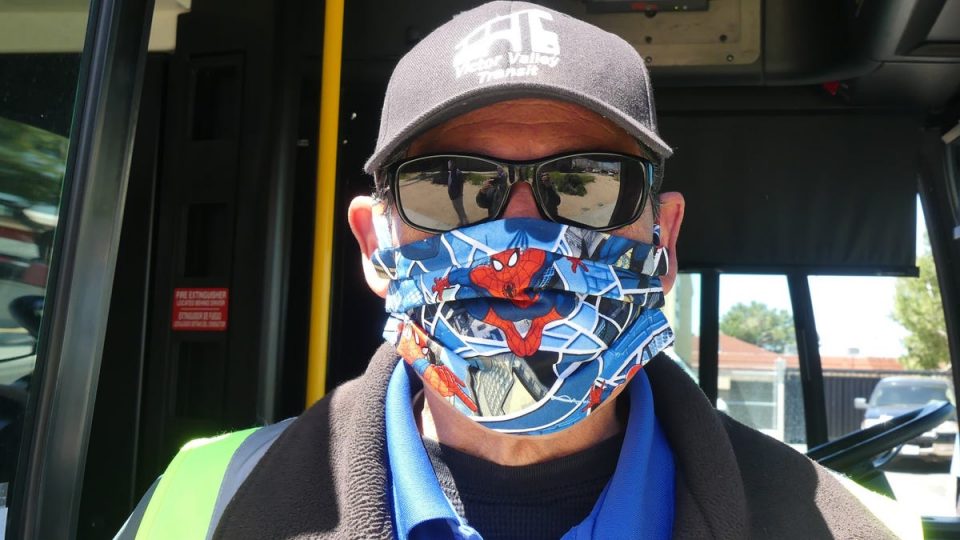The San Bernardino County Board of Supervisors terminated a nearly two-year-old local state of emergency associated with COVID-19.
“Thank you to all of our county employees, local hospitals, first responders, and others who have worked so tirelessly during these past two years! You are appreciated,” said 1st District Supervisor Paul Cook.
But the state of emergency’s end came with a warning from Board of Supervisors Chairman Curt Hagman, who emphasized that COVID-19 is still present, and county leaders continue to encourage residents to be cautious and get vaccinated.
“What today’s actions signal is that we have progressed to the point where extraordinary emergency spending and resource-allocation powers are no longer necessary,” said Hagman during Monday’s board meeting. “I join my fellow board members in commending county employees and especially the residents of San Bernardino County for the hard work and courage they have invested in this fight.”
Actions taken by the board ended the authority granted to the chief executive officer to make emergency procurement and staffing decisions while preserving the ability of first responders to support the emergency medical system by transporting patients.
Because COVID-19 continues to strain the county’s emergency medical system through paramedic staffing shortages and disruptions in supply chains, the county board created a new state of emergency exclusively to preserve the one provision from the previous state of emergency that allows other first responders to augment the emergency medical system.
COVID-19 vaccinations, testing
County officials said they can now end the local state of emergency safely.
- COVID-19 case rates are dropping significantly within the county.
- More than 3 million doses of the COVID-19 vaccine have been administered among nearly 2.2 million county residents.
- Testing and vaccination operations supported by the state of emergency are winding down as the effects of the pandemic become more manageable.
March 10 is the two-year anniversary of the county’s state of emergency when COVID-19 cases began rising, and other counties also declared emergencies, including Calaveras, Contra Costa, San Benito, Sutter, and Yuba.
On March 13, more than 5.7 million schoolchildren in California were sent home from school as over 3,600 cases of COVID-19 and 10 deaths were reported in the state.
That same day, President Donald Trump declared a national emergency as government officials said the pandemic continued to cause significant public health and safety risks.
School guidelines, mask mandates
The decision by the county board came one day after Gov. Gavin Newsom declared that school districts across the state would no longer require the wearing of masks on campus.
Regardless of vaccination status, all students and staff will no longer be required to wear a mask indoors at schools and child care facilities beginning March 12.
Newsom’s announcement on schools included an exception for school districts in high-risk counties.
Termination of the mask mandate on school campuses comes nearly two years after the state began shutting down school campuses in many districts.
Since then, parents and students in school districts across California have demanded the end of COVID-19 mandates, including those in Apple Valley and Hesperia.
In Oct. 2021, the AVUSD Board voted unanimously against possible California COVID-19 mandates, stating that the school district would not implement vaccination requirements on school campuses if imposed by the California Department of Public Health or local health officers.
‘Let Freedom roll’: Nationwide People’s Convoy kicks off in Adelanto
The school district board also requested that state officials provide “consistent and timely guidance” for schools to allow mask-wearing as an option during certain conditions.
The board requested that the state restore local authority to Apple Valley Unified to create and implement its COVID-19 safety plans, including guidelines for masks.
COVID-19 cases
The county reported 2,821 cases and 105 deaths in the latest week. A week earlier, it had reported 2,534 cases and 40 deaths. Throughout the pandemic, it has reported 579,389 cases and 6,505 deaths.
ADELANTO
- Population: 35,234
- Total Cases: 9,611
- Outbreak Cases: 349
- Community Cases: 9,262
- Total Deaths: 95
- Widespread risk
APPLE VALLEY
- Population: 73,694
- Total cases: 19,616
- Outbreak cases: 216
- Community cases: 19,400
- Total deaths: 351
- Total tests: 208,909
- Widespread risk
BARSTOW
- Population: 23,754
- Total cases: 6,711
- Outbreak cases: 74
- Community cases: 6,637
- Total deaths: 111
- Total tests: 71,444
- Widespread risk
HESPERIA
- Population: 97,312
- Total cases: 25,259
- Outbreak cases: 37
- Community cases: 25,222
- Total deaths: 272
- Total tests: 249,469
- Widespread risk
LUCERNE VALLEY
- Population: 7,041
- Total cases: 798
- Outbreak cases: 4
- Community cases: 794
- Total deaths: 24
- Total tests: 8,367
- Substantial risk
PHELAN
- Population: 14,757
- Total cases: 3,234
- Outbreak cases: 8
- Community cases: 3,226
- Total deaths: 44
- Total tests: 31,806
- Widespread risk
VICTORVILLE
- Population: 128,353
- Total cases: 40,210
- Outbreak cases: 1,181
- Community cases: 39,029
- Total deaths: 507
- Total tests: 394,640
- Widespread risk
Daily Press reporter Rene Ray De La Cruz may be reached at 760-951-6227 or [email protected]. Follow him on Twitter @DP_ReneDeLaCruz


